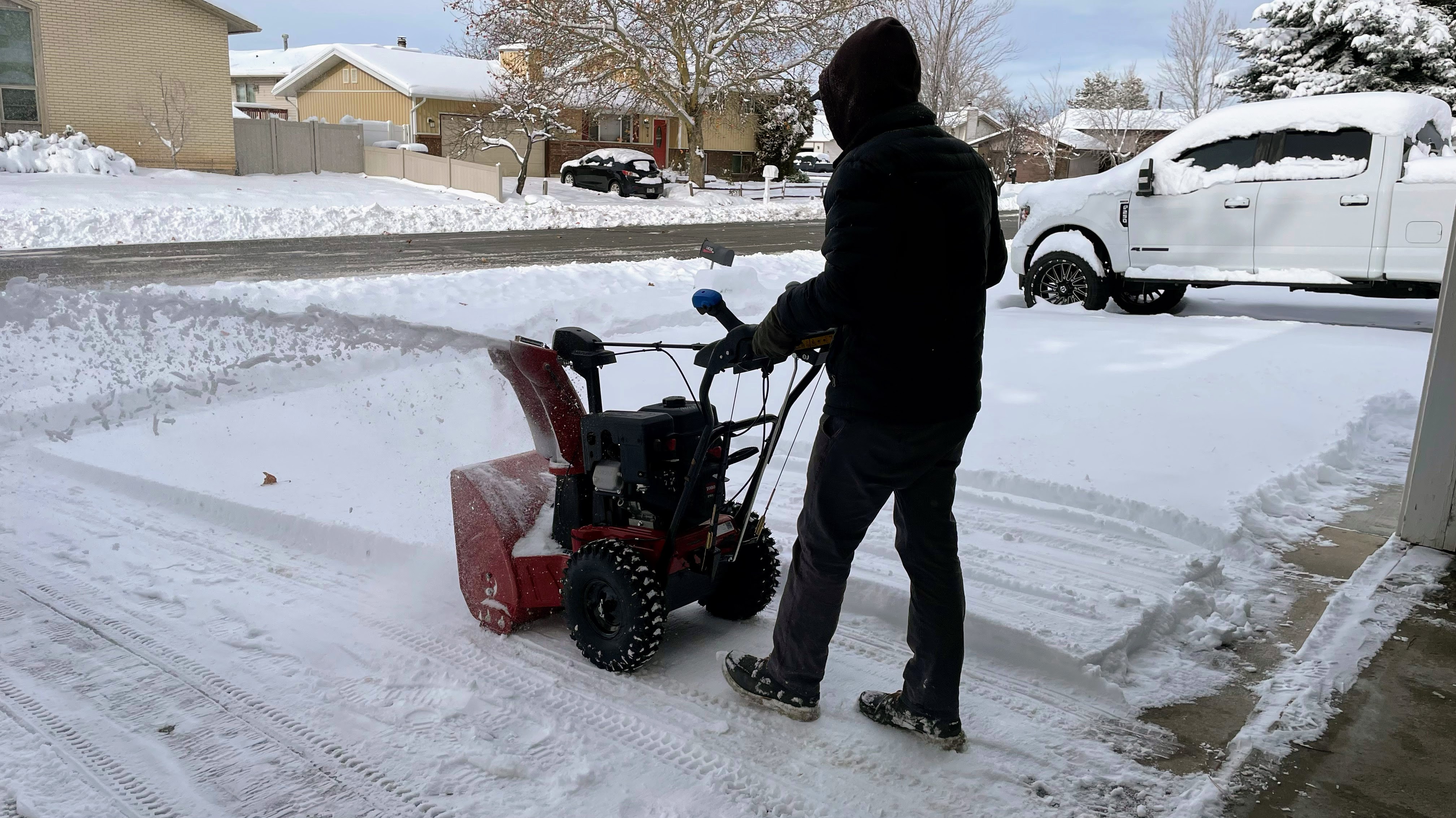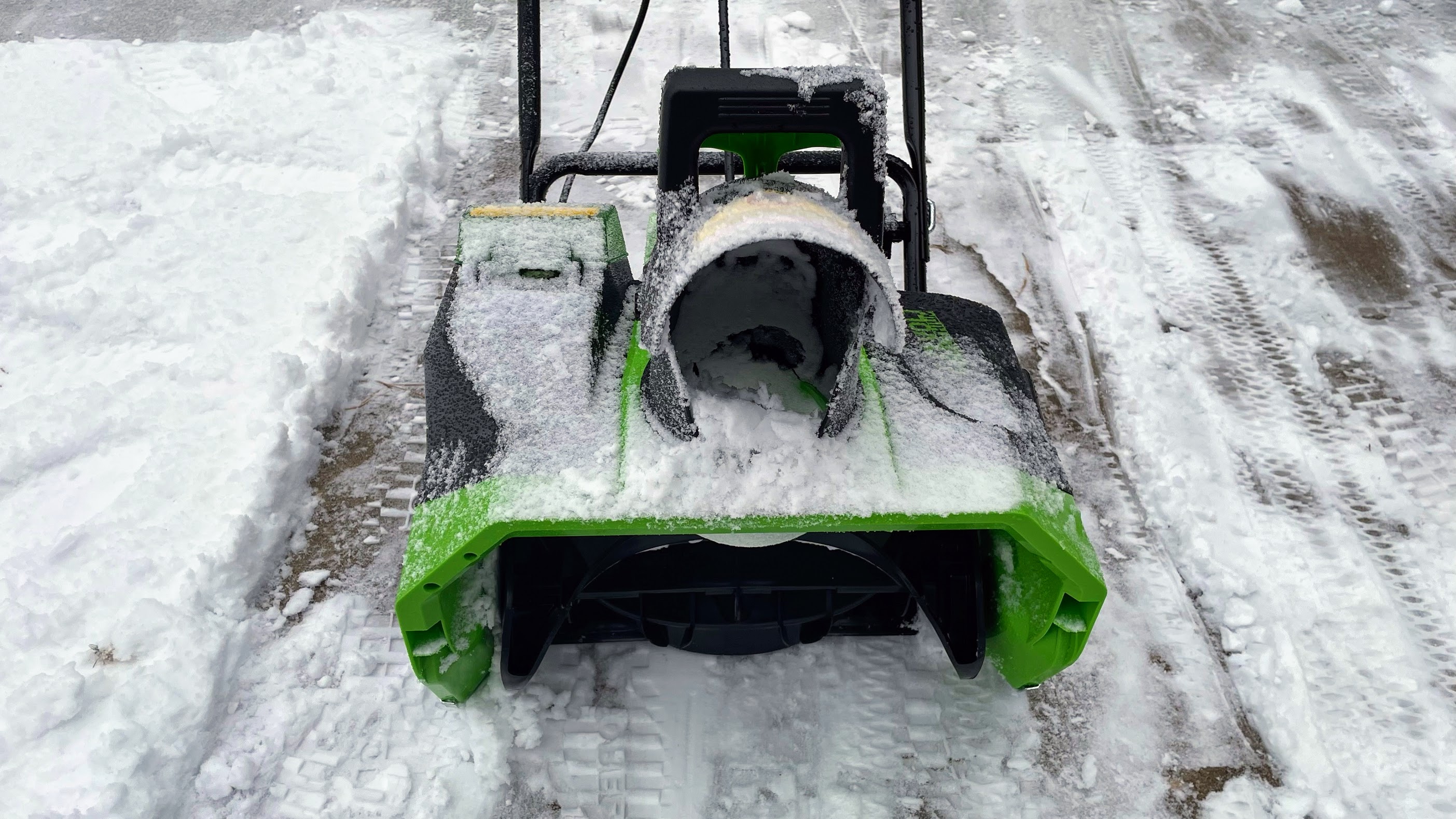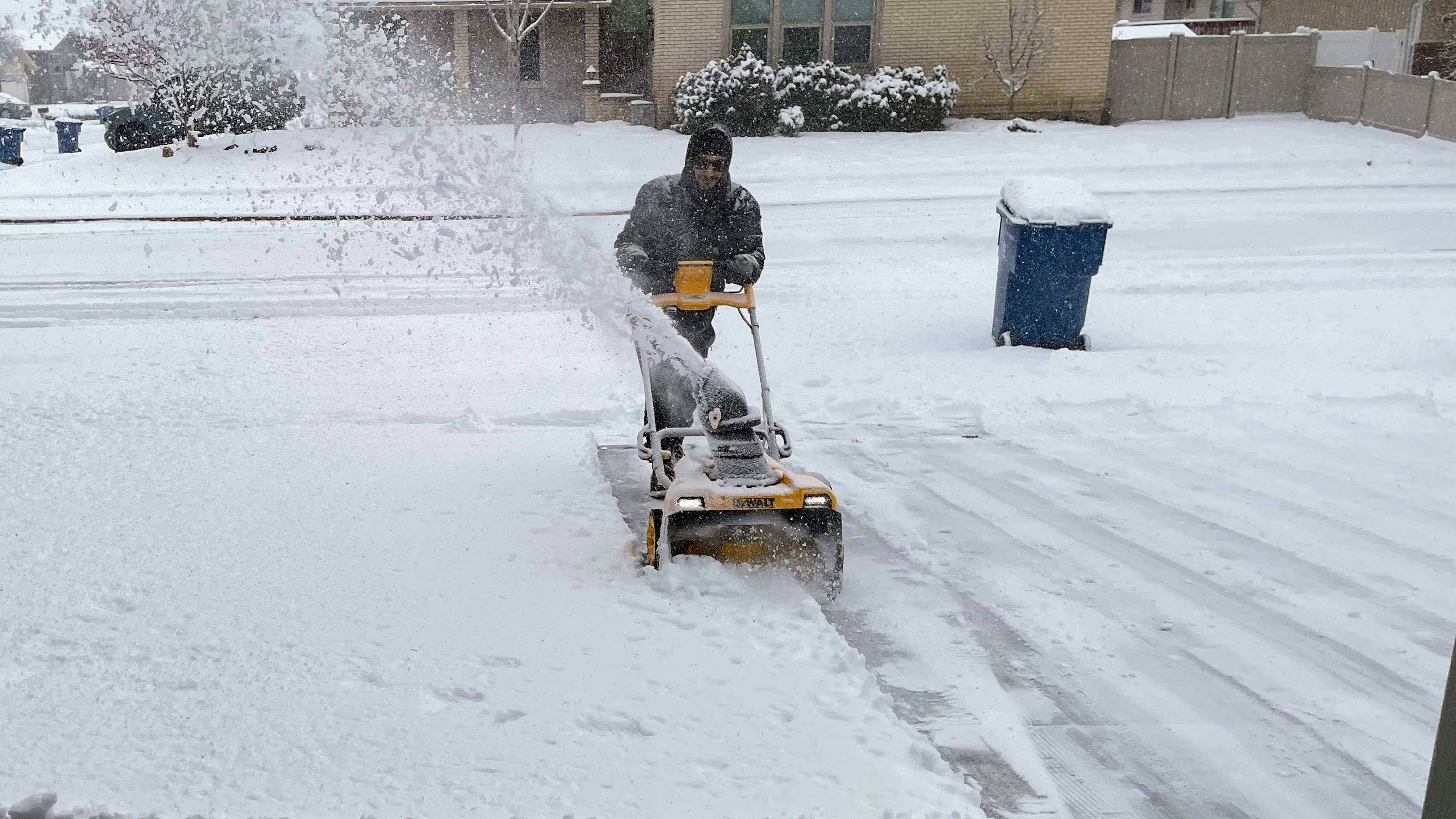Winter. Whether you like it or not, it’s coming. Not only does winter bring along extra cold days and nights, but extra chores. Chief among them is snow removal. Snow removal without a snow blower is downright hard labor. But you don’t have to break your back shoveling snow this winter because one of the best snow blowers can zip up and throw snow out of your way with minimal effort.
Snowblowers aren’t all created equal. As you browse for a snow blower, you might wonder what the difference is between a single-stage and two-stage snow blower. While they may look similar, their snow removal capabilities, engines, and use cases differ. Knowing the difference and your specific snow removal needs makes all the difference when selecting the two snow blowers.
You don’t have to wander in the dark regarding snow blowers. We’ll dive into the nitty-gritty details of single and two-stage snow blowers, how they work, and when to use each. We’ve also included expert insights from industry professionals to provide further insight and help ensure you find the right snow blower to make snow removal a breeze (albeit chilly) this winter.

Single-stage vs two stage snow blowers: Price & Value
Single-stage snow blowers are an affordable alternative to two-stage snow blowers. The price will depend on a few factors, including the width of the clearing path, metal augers being more expensive than plastic drills, and additional features such as manual vs. automatic chute adjusters. That said, you can generally find a single-stage snow blower between $200 and $700, with some of the most expensive costing around $1,000.
As you can imagine, because of the increase in snow-blowing power and snow removal efficiency, two-stage snow blowers are typically more expensive than single-stage snow blowers. You can expect a two-stage snow blower to be anywhere from $800 to $2,000 for a premium two-stage snow blower.

Mathieson has great insight and knowledge of power tools from the Stanley Black & Decker family of brands.
Single-stage vs two stage snow blowers: Features & functions
Naturally, we’ll start with the more basic single-stage snow blower. Single-stage snow blowers will often be called snow throwers, so keep that in mind as you research. Both terms are interchangeable for single-stage snow blowers.
Regarding single-stage snow blowers, Toby Mathieson, Director of Product Management at Stanley Black and Decker, explained, "Single-stage snow blowers have an auger that both centralizes and throws the snow." The auger – the rotating blade in the mouth of the snow blower –scoops up the snow and throws it through the chute in a single, continuous motion.
Single-stage snow blowers are typically lightweight, compact, easy to store, and can even be battery-powered. According to Gene Caballero, Co-founder of Green Pal, "Single-stage snow blowers are the best choice for smaller driveways and light snowfall. They work by scooping and throwing snow in one motion but struggle with packed, wet, and heavy snow."

Gene Caballero co-founded GreenPal, Which specializes in lawn care and snow removal. In addition to running a successful business, Gene has an MBA and has been a corporate sales coach for Fortune 500 companies.
Regarding battery vs. gas-powered single-stage snow blowers, gas-powered options generally have more snow removal power. Still, they are heavier, often have a pull-start, and the engines have much more maintenance.
On the other hand, battery-powered single-stage snow blowers are generally lightweight, push-button start, and require virtually no engine maintenance. Yet they have limited run time, and when the battery life runs out—usually between 30 and 50 minutes—it usually takes a few hours to change the battery.

Two-stage snow blowers are more advanced and powerful than their single-stage counterparts. Mathieson explained, "Two-stage models use the auger to centralize the snow and add a dedicated impeller to throw the snow." This impeller helps the snow blower throw snow farther than a single-stage snow blower. You can expect a two-stage snow blower to toss snow anywhere between 20 and 45 feet instead of the 10 - 20 feet of a single-stage snow blower.
Two-stage snow blowers often have strong gas-powered engines that power a metal serrated auger. The auger is used not only to pick up snow but also to break up heavy snow and ice. The auger then feeds the snow into the impeller to propel the snow out of the chute. The powerful engines combined with the auger and impeller increase the snow blower's removal ability. This makes snow removal a challenging manual task that would take hours into an easy endeavor that only takes a few minutes.
Single-stage vs two stage snow blowers: Performance
Single-stage snow blowers are perfect for regions that experience light to moderate snow accumulation, generally up to 6 inches at a time. Regarding single-stage snow blowers, Yaeir Moinzadeh, an MHIC licensed contractor and owner of Blue Rise Baltimore Roofing, said, "Single-stage snow blowers have a paddle that scoops and throws snow in one motion. Therefore, they are much quicker for light snow and are ideal for paved driveways and light to medium snowfall."
Many single-stage snow blowers don’t have skid plates to keep the drill off the ground. Because of this, they are not recommended for use on gravel or uneven areas. Your snow blower can throw loose rocks and debris, damaging the auger or surrounding property.

Yaeir Moinzadeh is an MHIC-licensed contractor and owner of Blue Rise Baltimore Roofing. He’s been in the construction business for several years and, being in the Baltimore area, has to do a fair share of snow removal on many properties he works at.
Two-stage snow blowers are a fantastic tool in the arsenal in areas with heavy snowfall. These can handle snow depths up to 12 inches, making them ideal for two-car or larger driveways and areas. "Two-stage snow blowers are best for larger areas and heavier snow and are mostly used in commercial settings. They have a drill to break up the snow and an impeller to throw it—handling larger and deeper amounts of snow better," said Caballero.
As mentioned above, two-stage snow blowers have skid plates to keep the drill from touching the ground. Because of this, two-stage snow blowers can be used on both paved and gravel surfaces. So if you have extra parking for an RV or an unpaved area that leads to a gate, you don’t have to worry and can still use your two-stage snow blower over the area.

Single-stage vs two-stage snow blowers: which is best?
When it comes to choosing between a single-stage and two-stage snow blower, you’ll want to keep the following in mind:
The area you're clearing: Single-stage snow blowers are better for sidewalks and single-car driveways with flat, non-graveled surfaces. Two-stage snow blowers are great for larger areas and work well on both paved and gravel surfaces and uneven ground.
Snow accumulation in your area: Single-stage snow blowers are great for lightweight snow and can remove up to 6 inches of snow at a time. Two-stage snow blowers are better suited for wetter, heavier snow and can remove up to a foot of snow with ease in most cases.
Your budget: Single-stage snow blowers are more budget-friendly snow removal options than two-stage. You can find a decent single-stage snow blower for upwards of $200, whereas a two-stage snow blower will often run upwards of $800.
Choosing between a single-stage and two-stage snow blower comes down to your specific snow-clearing needs. No matter which option you choose, any snow blower will save you time and effort when removing snow this winter. Add one to your snow removal repertoire – no need to thank us later.

